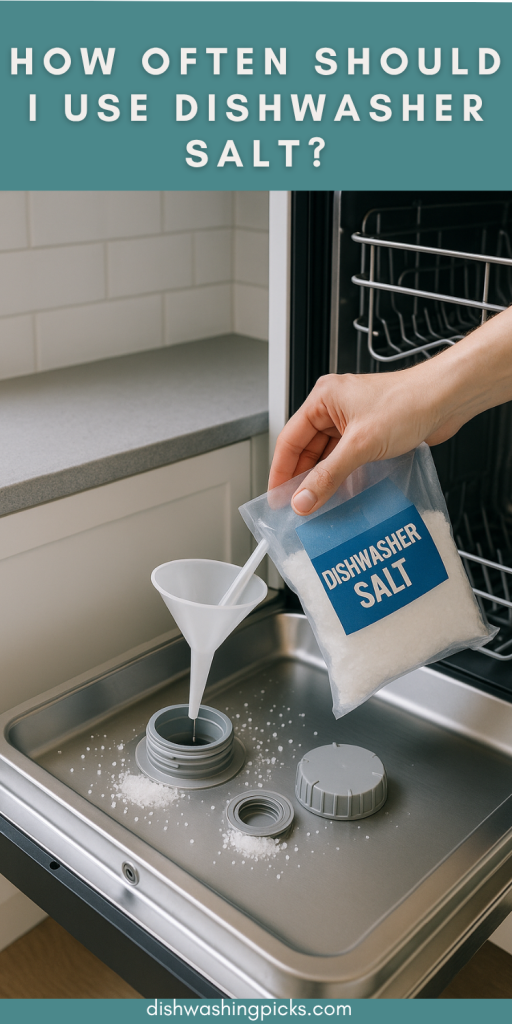
Wait… Dishwasher Salt Is a Thing?
Yep, it is! And if you’re scratching your head thinking, “Hold up—my dishwasher needs salt now?” you’re not alone. A lot of people discover dishwasher salt the same way they discover IKEA furniture comes with 800 screws: mid-project and slightly panicked.
So, what is dishwasher salt? Why does your machine want it? And more importantly… how often are you supposed to use it?
Let’s break it down—no jargon, no fluff. Just real answers.
What Exactly Does Dishwasher Salt Do?
Imagine this: You just pulled your dishes out, and they look clean… but they’re covered in cloudy spots. Like someone gave your wine glasses a chalk bath.
Annoying, right?
That’s often the result of hard water—water with high levels of minerals like calcium and magnesium. These minerals mess with your detergent, leave residue on your dishes, and over time, can even gunk up your machine.
Enter: dishwasher salt. It doesn’t clean your dishes directly, but it helps your dishwasher’s built-in water softener do its job.
Think of it like this: detergent does the scrubbing, but salt keeps the water soft so the detergent can actually work properly.
No salt = hard water = dull dishes and a cranky dishwasher.
Okay, Got It… But How Often Should I Use It?
Here’s where things get a little… “it depends.”
There’s no universal schedule like “refill every Tuesday” because it all comes down to:
- How hard your water is
- How often you run your dishwasher
- The size of your dishwasher’s salt reservoir
But in general, you’ll probably need to refill the salt:
- Once a month in areas with moderately hard water
- Every couple of weeks if you have very hard water and use your dishwasher daily
- Less often (maybe every 2–3 months) if you have soft water or run it infrequently
Pro tip: Most dishwashers have a little salt warning light. If that lights up, it’s your machine’s polite way of saying, “Hey buddy, I’m thirsty for salt.”
How Much Salt Do You Even Add?
Don’t worry, you’re not seasoning a roast here.
Most dishwasher salt compartments take around 1 to 1.5 kg (that’s about 2–3 pounds for our friends outside the metric world). The first time you fill it, you may need to add water to the compartment as well—just check your manual.
And no, don’t use regular table salt. That stuff can mess things up. Dishwasher salt is specially formulated to not cause clogs or scratches.
Real-Life Tip: Make It a Habit
Here’s a super simple hack: every time you refill your rinse aid or clean the filter, just peek at the salt compartment.
You’ll start to get a feel for how fast it runs out. And if you live in a hard water area (your kettle has limescale, your shower glass is never spotless, your taps get crusty…), then just assume your dishwasher is burning through that salt faster than you’d think.
Don’t Skip the Salt
So—how often should you use dishwasher salt?
As often as your machine needs it. (Yeah, we know that sounds like a cop-out, but it’s the truth.)
Check the salt level regularly, top it off when the light comes on (or before it does, if you’re proactive), and your dishes—and your dishwasher—will thank you.
It’s one of those small things that makes a huge difference in cleaning results, appliance lifespan, and avoiding those dreaded white spots.
